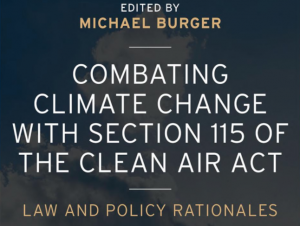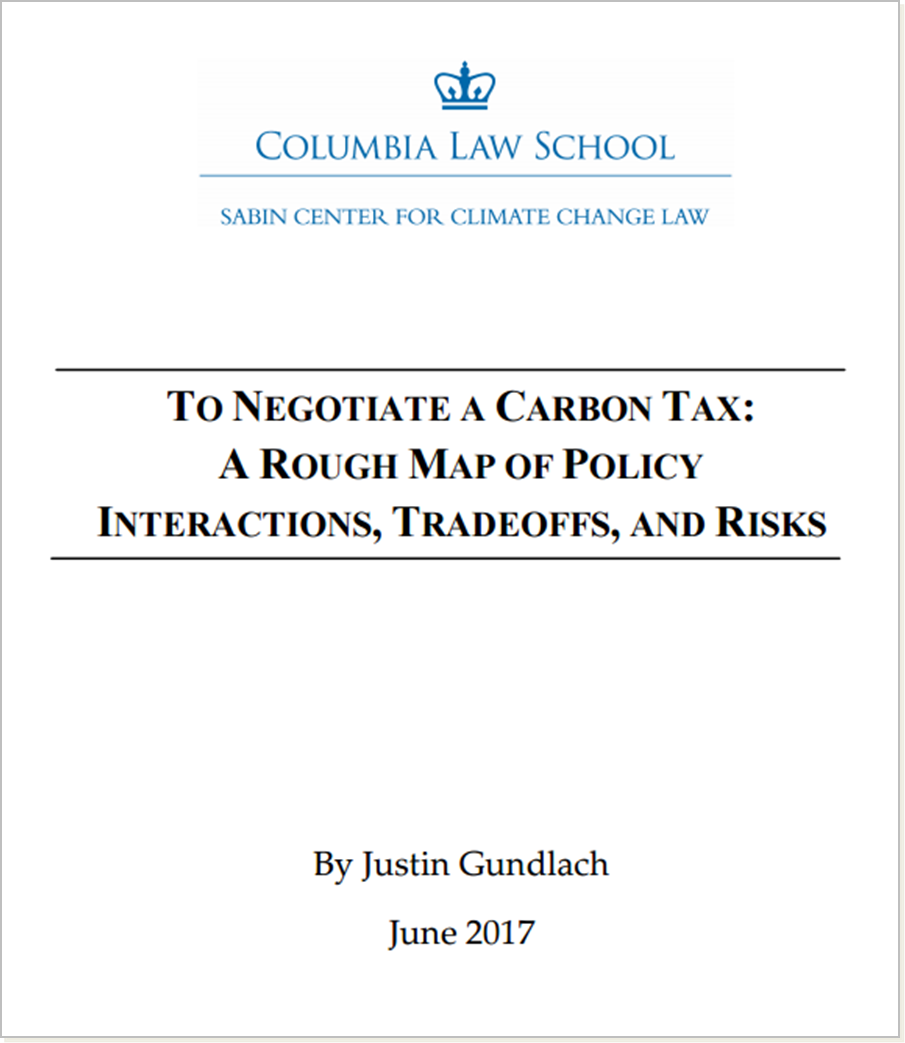By Michael Burger
 This past week has been an extraordinary one: on November 3 the people of the United States elected Joe Biden, who campaigned on an extensive and sophisticated climate plan, president of the United States. The next day, on November 4, President Donald Trump’s withdrawal of the U.S. from the Paris Agreement was made effective. The contrast between where the federal government is on climate change and where it needs to be could not be more visible, or more stark.
This past week has been an extraordinary one: on November 3 the people of the United States elected Joe Biden, who campaigned on an extensive and sophisticated climate plan, president of the United States. The next day, on November 4, President Donald Trump’s withdrawal of the U.S. from the Paris Agreement was made effective. The contrast between where the federal government is on climate change and where it needs to be could not be more visible, or more stark.
The scale and scope of the climate crisis calls for immediate and comprehensive nationwide efforts to reduce greenhouse gas emissions. New legislation would be the best option. With the Senate still up for grabs, the prospect for federal legislation is uncertain, to say the least. But even new legislation may not go far enough in reducing GHGs to meet the nation’s international climate commitments. From Day One, the Biden administration will need to think through and set in motion regulations that rely on existing statutes to achieve the deep emission reductions the science says we need.
Combating Climate Change with Section 115 of the Clean Air Act: Law and Policy Rationales provides a roadmap for an essential component of such a plan: the Environmental Protection Agency’s international air pollution authority. This new book is the culmination of a decade of collaboration by scholars and lawyers at the Sabin Center, the Emmett Institute at UCLA and the Institute for Policy Integrity at NYU, with major contributions from other outstanding legal scholars, experienced lawyers from the Environmental Protection Agency and the State Department, leading state regulators, and veterans of congressional climate battles. Its chapters lay out how the Clean Air Act’s international air pollution provision — Section 115 — provides a logical, common-sense basis for a federal climate policy that (a) allows the executive branch to synchronize the nation’s domestic emission reduction efforts with its international climate commitments; (b) authorizes the use of a broad range of regulatory approaches, including market-based mechanisms; (c) respects cooperative federalism by giving EPA the responsibility to set emission reduction targets and states the authority to decide how to achieve them; and (d) is administratively simple. Whatever might come from Congress in the next year or two, and whatever else the Biden administration’s environmental, energy and natural resources agencies might do, EPA’s international authority can fill the gap between the emission reductions other federal, state and local programs can achieve and the level of cuts required to meet the nation’s climate goals.
The criteria for using the international air pollution provision are relatively straightforward. Section 115 is triggered when EPA both finds that emissions in the United States contribute to air pollution that endangers public health or welfare in another country and determines that the other country provides “essentially the same rights with respect to the prevention or control of air pollution occurring in that country as is given that country” by Section 115. In the case of climate change, both of these prerequisites are readily met: GHGs in the U.S. contribute to climate change, which endangers public health and welfare in other countries (as well as here at home). And the UNFCCC, the Paris Agreement, and potentially additional agreements ensure both that the U.S. can participate in other countries’ planning and that there is a mutual, or reciprocal, substantive commitment to address the climate crisis.
Once triggered, Section 115 operates through state implementation plans (SIPs), the state air pollution control programs that are the heart of the Clean Air Act. EPA’s role is to require the states to revise their SIPs to the extent they are “inadequate to prevent or eliminate the endangerment.” EPA can use Section 115 to set GHG emission reduction targets for the states, and the states can work together with EPA and other states to build upon their existing initiatives to achieve these emission reductions in a cost-effective manner. If a state refuses to revise its SIP, EPA can promulgate a federal implementation plan (FIP) for the state.
Combating Climate Change with Section 115 of the Clean Air Act: Law and Policy Rationales reflects a significant enhancement of a 2016 article, which many of the book’s authors contributed to, that examined how EPA’s international air pollution authority could help achieve the country’s climate change goals at that time. The book’s updated analysis makes important adjustments to the thinking in that article to reflect all that has happened in the intervening years – including developments in the UNFCCC, the U.S. Supreme Court, and U.S. politics. We dive deeper into the key implementation issues that would face EPA and the states, and we explore ways to address the various legal and policy issues that would arise. In short, the book demonstrates that the statutory language is robust enough to empower EPA and the states to reduce U.S. emissions in line with our international commitments, while providing sufficient guardrails to constrain and direct agency discretion. Although Section 115 is not the only existing authority the Biden administration can, should, or will rely on to address climate change, it is a powerful one, which provides the authority and flexibility necessary to design a climate change program that can produce deep emission reductions in an efficient and equitable manner.
To purchase the book, go here. You may use the discount code MBRG35 for a 35% discount on hard cover copies. The discount code does not apply to e-books.
To read a summary of the book, go here.
For additional materials on the International Air Pollution provision, go here.
Critical Acclaim:
“We owe a great debt to the renowned group of environmental lawyers who have brought us this careful and compelling account of how to use the Clean Air Act to confront the most important environmental issue of all time.” – Lisa Heinzerling, Georgetown University, US
“This volume is the most important book on U.S. climate law available today. Within its pages, the reader will discover a comprehensive and compelling analysis of how Section 115 of the Clean Air Act already empowers the Environmental Protection Agency to work with states to create a sensible national climate action plan in coordination with other countries. No president can justify failing to follow this book’s recommendations.” – Douglas A. Kysar, Yale University, US




